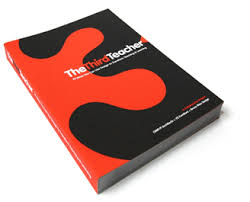I have been reading The Third Teacher and I am only about half way through. But I just cannot resist writing about it even prior to completing it. The text is not new (2010) but it has so many ideas to offer and reflect upon.
As a new school, we have the perfect chance to try new design concepts and implement what we perceive as the “latest” and “greatest” ideas about how children learn. But this clean slate is not the common experience of most educators. My very first school placement as a faculty of education student was in a small school celebrating its 75th anniversary. Transforming design in a space this well-established is a very different task. I certainly recognize the constraints of revamping an existing space (as many of my teacher librarian colleagues are doing in the learning commons movement).
Yet – what I love about this text so far is that to me it speaks as much to my learning stance of how children learn and must be valued, as it does to actual physical design concepts. And since learning stance is FREE there is no monetary investment needed to shift our thinking.
To the same end – there is no point spending loads of money revamping or redesigning a space for “21st century” learning if I am a 20th century practitioner. I could have the newest furniture, lighting, technology, environmentally conscious products and access to materials in the world, BUT if I do not trust children to learn and inquire and grow, nothing will change.
Let me offer some of my favourite examples from the text:
#2 Do no harm
Adopt this as an oath and a fundamental approach to children’s learning environments
#4 Put safety before study
Children are ready to learn only when they’re safe and secure, so address those needs before considering any other aspect of a child’s environment.
#12 Support great teaching
Free teachers from the traditional desk at the front of the classroom and encourage new settings for teaching and learning.
#13 Build neural networks
Spark cognitive development by providing students of all ages with places to test a new skill.
#20 Make peace with fidgeting
Think of it as brain development, which it is. Then think of how to make room of it in the classroom.
None of the above examples are just about the latest furniture, technology or materials. To me they speak to the true intent of educating our society and treating our children with respect.
I plan to write again about the format of the book (which I love), the various contributors (including RAFFI) and the changes I intend to implement.
But right now I am just so excited to keep reading and considering my own practice that I’ll just leave it there for now.
